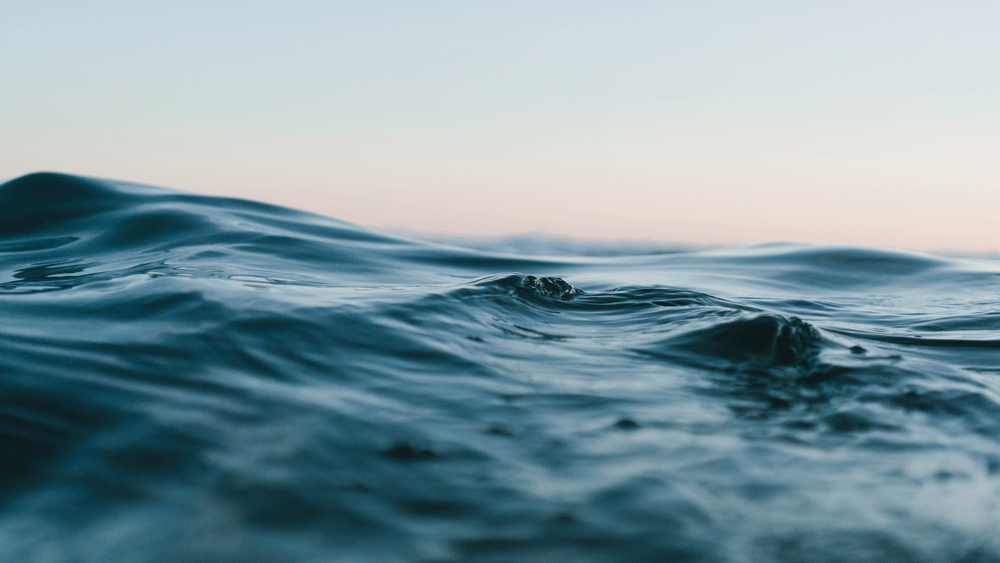Waters of Death, Waters of Life
June 30, 2023

I still remember it like it was yesterday: the brightness of the sun on my skin, the chill of the water, the crowds of cheering people. We had gathered that Saturday afternoon on the shores of Lake Jindabyne, a half-hour drive from Mount Kosciuszko, Australia’s tallest mountain. The lake itself sprawls over where the old Jindabyne once stood until the Snowy River was dammed, drowning the town. Nowadays, new Jindabyne is a tourist town that exists mostly as a watering hole for weary holidaymakers as they return from their foray into the Snowy Mountains.
The afternoon we gathered at the edge of that lake, hundreds of people had assembled for one purpose: to witness me being dunked in the waters of the lake. My pastor and I stepped out into the shallows until we stood waist-deep. He said a few words over me, I responded, then holding my back with his left hand, he put his right hand on my chest and lowered me backward into the water. For a moment, it almost felt as though I was about to drown, then suddenly I was jerked upward out of the dark water into the warm sunlight above. If an alien were to descend from the heavens, I wouldn’t blame them if they assumed they were witnessing some sort of ritualistic humiliation ceremony. And yet, I was hugged, congratulated and joyously embraced by the people standing on shore.
For the uninitiated, I am describing the ancient Christian practice of baptism. It emerged in Israel around 2500 years ago as a cleansing ritual. Early Christians adopted this practice from their Jewish brothers and sisters, using it as an initiation rite for new converts. As Christianity spread through the world, this practice changed according to time and culture. Infant baptism became commonplace for the Catholic church during the medieval period, with figures like Martin Luther reclaiming it in its original form through the Protestant Reformation. Today, Baptists, Pentecostals, Seventh-day Adventists and more all practice baptism. So, what is baptism today? Is it an outdated sacrament we should do away with, or does it still have a place in our spiritual practice?

(Credit: Josue Michel, Unsplash)
Waters of death
The practice of baptism is all about life and death. I’ll be honest with you: drowning is perhaps the mode of death I’d prefer least if I could pick (I’d obviously prefer not to die at all, but that seems a little out of the question). Sure, there are about a million ways to die but of all of them, drowning scares me the most. I still remember as a child snorkelling in the ocean near where I grew up. All was calm and peaceful—the light reflecting off the white sand, the shoals of colourful fish, the beautiful coral. All that was broken when out of nowhere, an enormous stingray swam past. Steve Irwin had only passed away a year earlier, so my young brain was suitably freaked out.
Beyond that, my trepidation of the ocean goes deeper (pun intended). There’s something about the dark depths of the water that is unsettling. Perhaps it’s the idea that the further down you go, the stranger things you’ll encounter. Or perhaps it’s the knowledge that even though oceans make up 71 per cent of the earth’s surface and contain 99 per cent of all habitable space, around 95 per cent of it remains unexplored.
It shouldn’t come as much of a surprise to learn that the ancients considered the oceans with much fear and respect. Babylonians and Egyptians alike imagined many of the great monsters in their mythologies coming from the ocean depths. Even in the opening passages of Genesis, the first book of the Bible, God is seen wrestling order and goodness from the grip of the abyssal waters. In the books of Amos, Isaiah, Psalms and Job, the “Leviathan” is described as a great “dragon of the deep”. Ultimately though, this great and terrible monster is defeated by God, symbolising His dominance over all creation, no matter how destructive and powerful some of its denizens are. It’s easy to imagine being in the shoes of an ancient person with no sonar or camera equipment peering into a deep, black sea imagining the beasts that surely lurk in its depths.
It makes sense that as well as being the home of monsters, ancient people equated the deep waters as the place of death. The flood narrative of Genesis 6 shows how water, when it is out of control, can result in death and destruction on an unimaginable level. The Jewish place of death is Sheol, which is often described as a pit or deep hole. This imagery combines the real-world Valley of Gehenna you can visit in Israel today, as well as old ideas about sinking into deep water. Ancient Jews, Babylonians and Egyptians all believed that below the ground was a boundless void of dark water and that the earth we live on is like one of many lily pads floating around a vast pond. Dig far enough and you might fall in! Though this may seem far-fetched to us, scientists have recently discovered an enormous reservoir of water beneath the earth’s surface estimated to hold three times the amount found in our oceans. Perhaps the ancients knew something we don’t.

(Credit: Arquidis Molina, Unsplash)
Waters of life
But water is also described as life-giving. The Israelites had to pass through the waters of death (aka the Sea of Reeds) as they fled Pharaoh and his armies. This water which provided a life-giving way of escape for Moses and the Israelites then became a grave, quite literally, for Pharaoh and his soldiers. The water that flowed from the rock that Moses struck in Numbers 20 gave life to a thirsty people. When Jesus came onto the scene in the first century, He invited people into His new way using this same language. He was baptised by His cousin John in a river. When He met a woman who just had been constantly abandoned by her many husbands, He told her about water that would give her lasting satisfaction. Then, perhaps most strangely, He invited His disciples to “drink of Him” at the last supper, offering them a cup of wine.
Years later, the apostle Paul pens a letter to the Christians in Rome. In his letter, he describes what happens when a person becomes a follower of Jesus and undergoes the ritual of baptism. He describes the waters we are plunged into as a grave of sorts. To join Jesus in the new life He has promised us, we must first die to our old self. Our old ways, old perspective, old life: all this must be buried in the waters of death. Only then will we be able to be raised into brand-new life with Jesus and into His brand-new family. As Paul says, “We were therefore buried with him through baptism into death in order that, just as Christ was raised from the dead through the glory of the Father, we too may live a new life” (Romans 6:4).
Baptism is about letting go of the old self and being made new. Your regrets, mistakes, addictions: all of these things can be laid to rest when you give yourself to the One who gave everything for you. Make no mistake: baptism isn’t special on its own. It is merely a symbol of the life-transforming power of Jesus. I’m not perfect, but my life is far better today because of that decision I made all those years ago. If you’d like to discover how that power can transform your life, get in touch with us via the offer on the next page. You’ll be glad you did.
Jesse Herford is a pastor and associate editor for the AUS/NZ edition of Signs of the Times. He lives in Australia with his wife, Carina and their miniature schnauzer, Banjo.







